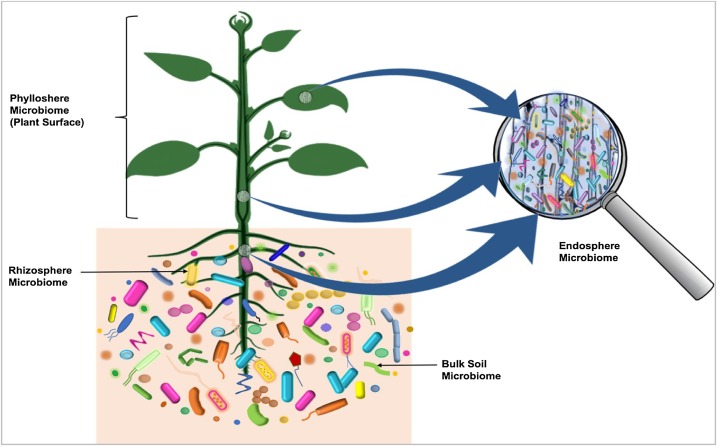|
Microbiota (other)
Microbiota are the microflora and microfauna in an ecosystem. Microbiota may also refer to: * ''Microbiota'' (plant), a genus of coniferous plants in the family Cupressaceae See also * Gut microbiota *Human microbiota This article lists some of the species recognized as belonging to the human microbiome. Whole-body distributed *''Acinetobacter calcoaceticus'' *''Burkholderia cepacia'' *''Pseudomonas pseudoalcaligenes'' *''Peptostreptococcus spp'' Natural ... * Lung microbiota * Skin microbiota * Vaginal microbiota {{Disambiguation ... [...More Info...] [...Related Items...] OR: [Wikipedia] [Google] [Baidu] |
Microbiota
Microbiota are the range of microorganisms that may be commensal, symbiotic, or pathogenic found in and on all multicellular organisms, including plants. Microbiota include bacteria, archaea, protists, fungi, and viruses, and have been found to be crucial for immunologic, hormonal, and metabolic homeostasis of their host. The term ''microbiome'' describes either the collective genomes of the microbes that reside in an ecological niche or within the microbes themselves. The microbiome and host emerged during evolution as a synergistic unit from epigenetics and genetic characteristics, sometimes collectively referred to as a holobiont. The presence of microbiota in human and other metazoan guts has been critical for understanding the co-evolution between metazoans and bacteria. Microbiota play key roles in the intestinal immune and metabolic responses via their fermentation product (short-chain fatty acid), acetate. Introduction All plants and animals, from simple life fo ... [...More Info...] [...Related Items...] OR: [Wikipedia] [Google] [Baidu] |
Microbiota (plant)
''Microbiota'' is a monotypic genus of evergreen coniferous shrubs in the cypress family (biology), family Cupressaceae, containing only one species, ''Microbiota decussata'' (Siberian carpet cypress, Russian arbor-vitae). The plant is native plant, native and endemism, endemic to a limited area of the Sikhote-Alin mountains in Primorskiy Krai in the Russian Far East. ''Microbiota'' is not to be confused with the range of microorganisms of the same name. The genus name was derived from ''micro-'', meaning "small", + ''Biota'', the genus name for a closely related conifer, a species formerly called ''Biota orientalis'', now renamed ''Platycladus orientalis.'' Description ''Microbiota decussata'' is a prostrate shrub to in height, and in spreading width. The foliage forms flat sprays with scale-like leaf, leaves 2–4 mm long. The conifer cone, cones are among the smallest of any conifer, 2–3 mm long, green ripening brown in about eight months from pollination, and ha ... [...More Info...] [...Related Items...] OR: [Wikipedia] [Google] [Baidu] |
Gut Microbiota
Gut microbiota, gut microbiome, or gut flora, are the microorganisms, including bacteria, archaea, fungi, and viruses that live in the digestive tracts of animals. The gastrointestinal metagenome is the aggregate of all the genomes of the gut microbiota. The gut is the main location of the human microbiome. The gut microbiota has broad impacts, including effects on colonization, resistance to pathogens, maintaining the intestinal epithelium, metabolizing dietary and pharmaceutical compounds, controlling immune function, and even behavior through the gut–brain axis. The microbial composition of the gut microbiota varies across regions of the digestive tract. The colon contains the highest microbial density recorded in any habitat on Earth, representing between 300 and 1000 different species. Bacteria are the largest and to date, best studied component and 99% of gut bacteria come from about 30 or 40 species. Up to 60% of the dry mass of feces is bacteria. Over 99% of the b ... [...More Info...] [...Related Items...] OR: [Wikipedia] [Google] [Baidu] |
Human Microbiota
This article lists some of the species recognized as belonging to the human microbiome. Whole-body distributed *''Acinetobacter calcoaceticus'' *'' Burkholderia cepacia'' *''Pseudomonas pseudoalcaligenes'' *''Peptostreptococcus spp'' Natural cavities *''Fusobacterium necrophorum'' *''Eubacterium spp'' *''Microbacterium spp'' Skin *''Acinetobacter spp'' *''Bacillus spp'' *''Candida albicans'' *''Candida parapsilosis'' *'' Corynebacterium spp'' *''Corynebacterium parvum'' *''Cutibacterium acnes'' *''Demodex folliculorum'' *''Enterobacter cloacae'' *''Epidermophyton floccosum'' *''Micrococcus spp'' *''Micrococcus luteus'' *'' Mycobacterium spp'' *''Neisseria spp'' *''Peptostreptococcus spp'' *'' Malassezia ovale'' *''Propionibacterium spp'' *''Pseudomonas aeruginosa'' *''Sarcina spp'' *'' Staphylococcus aureus'' *'' Staphylococcus epidermidis'' *'' Staphylococcus haemolyticus'' *'' Streptococcus viridans'' *''Trichophyton spp'' Hair follicles *'' Staphylococcus aureus' ... [...More Info...] [...Related Items...] OR: [Wikipedia] [Google] [Baidu] |
Lung Microbiota
The lung microbiota, is the pulmonary microbial community consisting of a complex variety of microorganisms found in the lower respiratory tract particularly on the mucous layer and the epithelial surfaces. These microorganisms include bacteria, fungi, viruses and bacteriophages. The bacterial part of the microbiota has been more closely studied. It consists of a core of nine genera: ''Prevotella'', ''Sphingomonas'', ''Pseudomonas'', ''Acinetobacter'', ''Fusobacterium'', ''Megasphaera'', ''Veillonella'', '' Staphylococcus'', and ''Streptococcus''. They are aerobes as well as anaerobes and aerotolerant bacteria. The microbial communities are highly variable in particular individuals and compose of about 140 distinct families. The bronchial tree for instance contains a mean of 2000 bacterial genomes per cm2 surface. The harmful or potentially harmful bacteria are also detected routinely in respiratory specimens. The most significant are ''Moraxella catarrhalis'', ''Haemophilus inf ... [...More Info...] [...Related Items...] OR: [Wikipedia] [Google] [Baidu] |
Skin Microbiota
Skin flora, also called skin microbiota, refers to microbiota (communities of microorganisms) that reside on the skin, typically human skin. Many of them are bacteria of which there are around 1,000 species upon human skin from nineteen phyla.Pappas S. (2009)Your Body Is a Wonderland ... of Bacteria ScienceNOW Daily News Most are found in the superficial layers of the epidermis and the upper parts of hair follicles. Skin flora is usually non-pathogenic, and either commensal (are not harmful to their host) or mutualistic (offer a benefit). The benefits bacteria can offer include preventing transient pathogenic organisms from colonizing the skin surface, either by competing for nutrients, secreting chemicals against them, or stimulating the skin's immune system. However, resident microbes can cause skin diseases and enter the blood system, creating life-threatening diseases, particularly in immunosuppressed people. A major non-human skin flora is ''Batrachochytrium dendrobatid ... [...More Info...] [...Related Items...] OR: [Wikipedia] [Google] [Baidu] |



